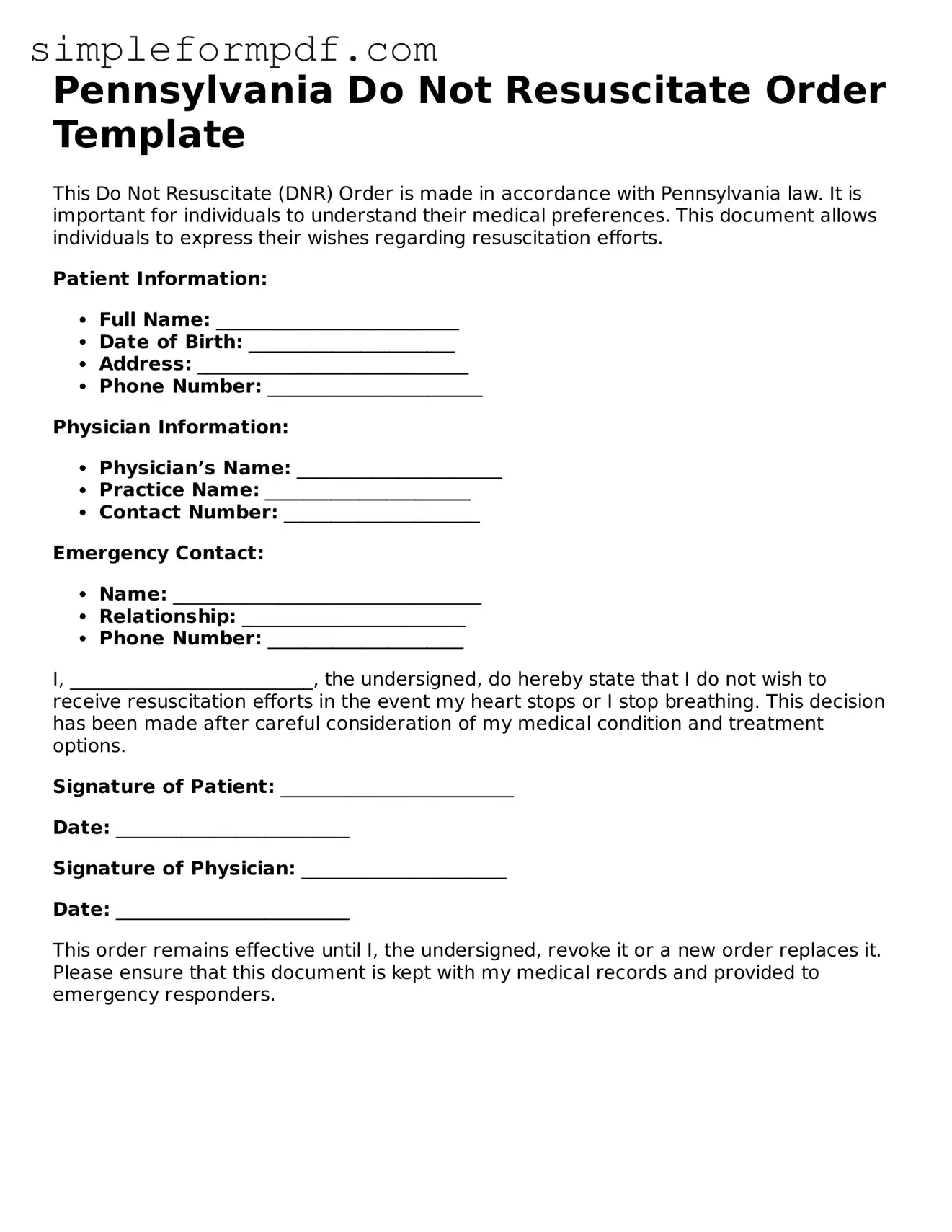Pennsylvania Do Not Resuscitate Order Template
This Do Not Resuscitate (DNR) Order is made in accordance with Pennsylvania law. It is important for individuals to understand their medical preferences. This document allows individuals to express their wishes regarding resuscitation efforts.
Patient Information:
- Full Name: __________________________
- Date of Birth: ______________________
- Address: _____________________________
- Phone Number: _______________________
Physician Information:
- Physician’s Name: ______________________
- Practice Name: ______________________
- Contact Number: _____________________
Emergency Contact:
- Name: _________________________________
- Relationship: ________________________
- Phone Number: _____________________
I, __________________________, the undersigned, do hereby state that I do not wish to receive resuscitation efforts in the event my heart stops or I stop breathing. This decision has been made after careful consideration of my medical condition and treatment options.
Signature of Patient: _________________________
Date: _________________________
Signature of Physician: ______________________
Date: _________________________
This order remains effective until I, the undersigned, revoke it or a new order replaces it. Please ensure that this document is kept with my medical records and provided to emergency responders.
